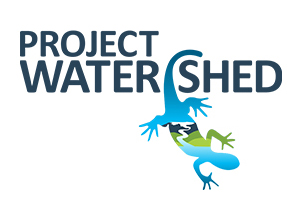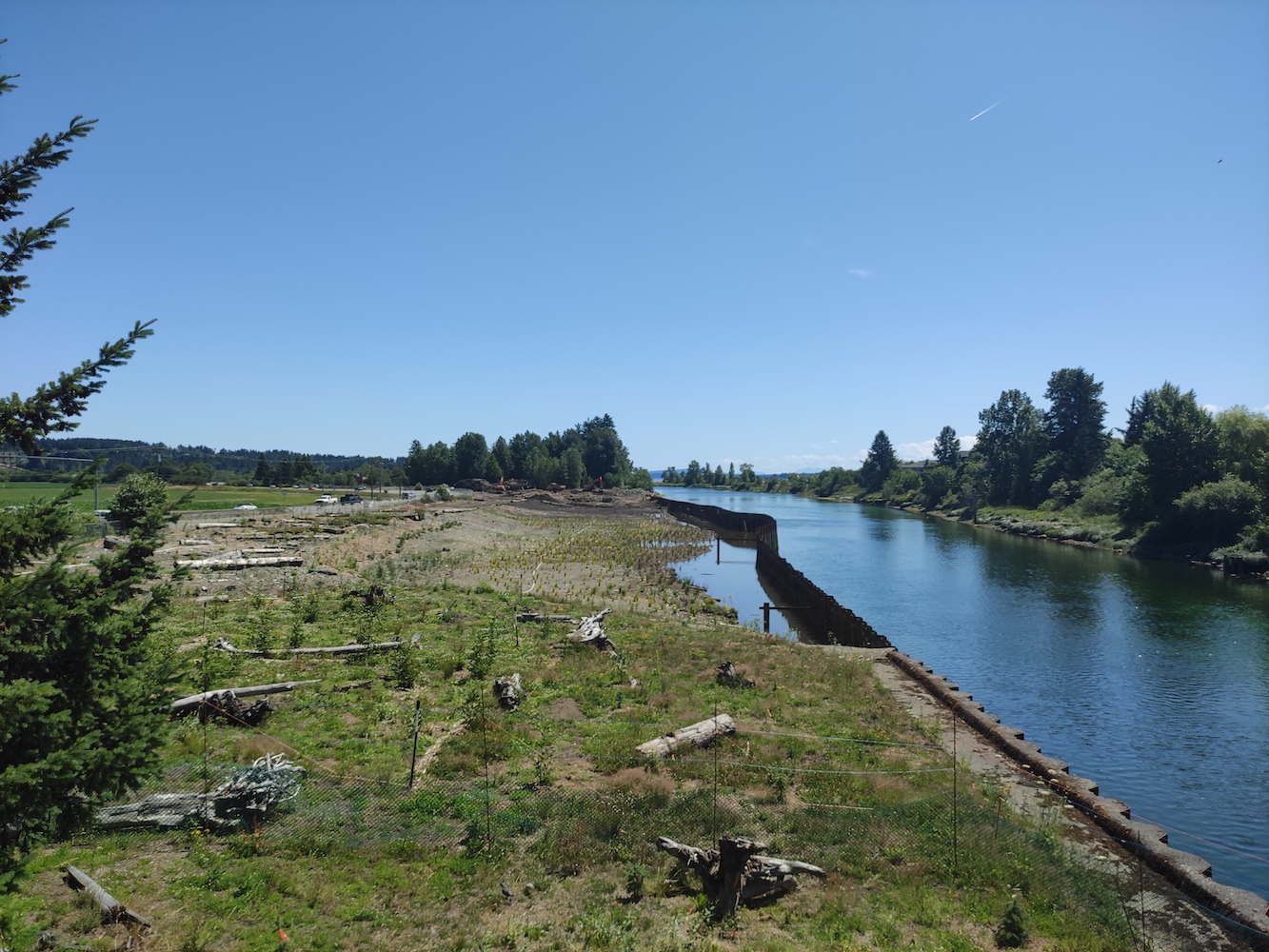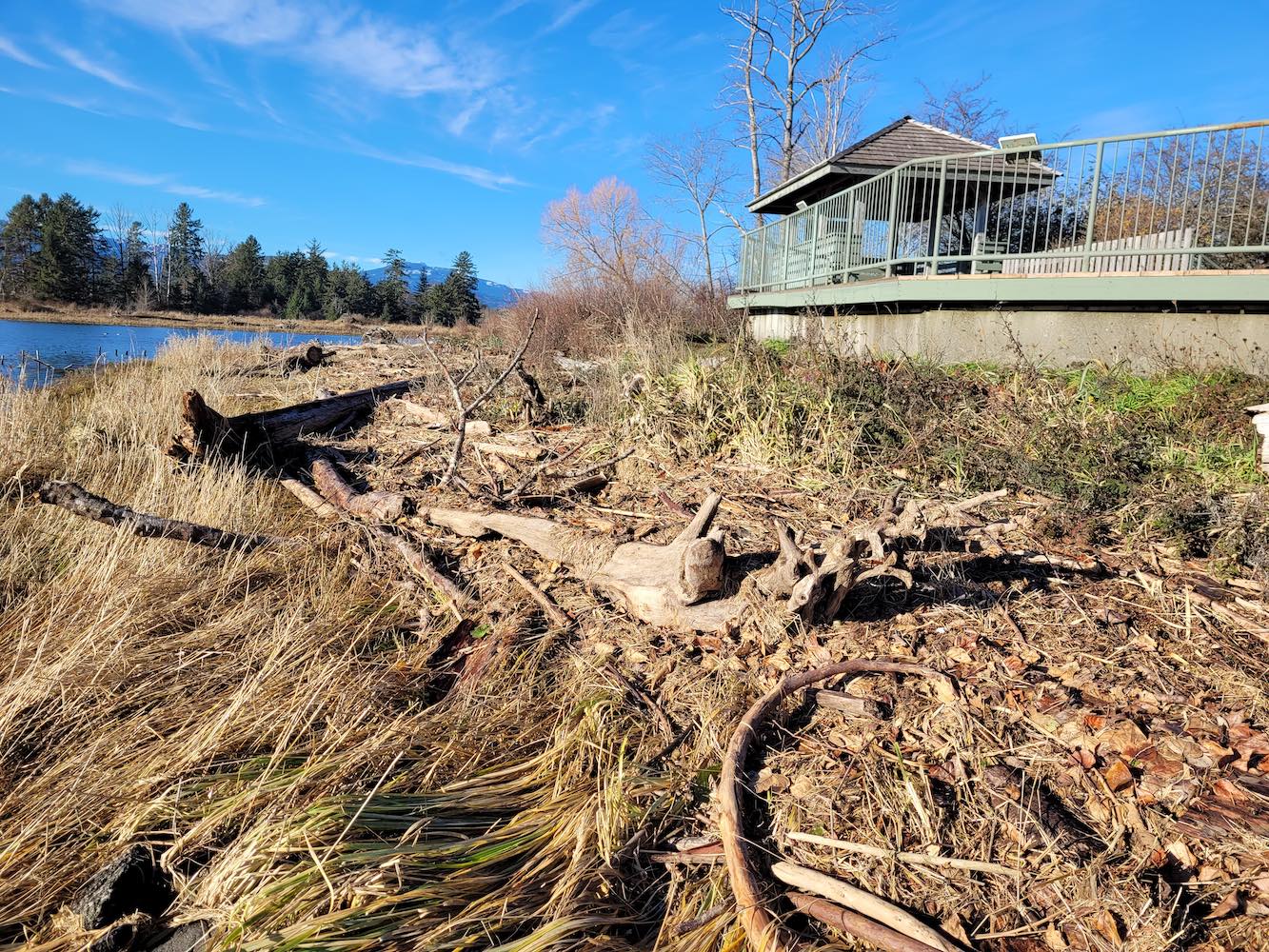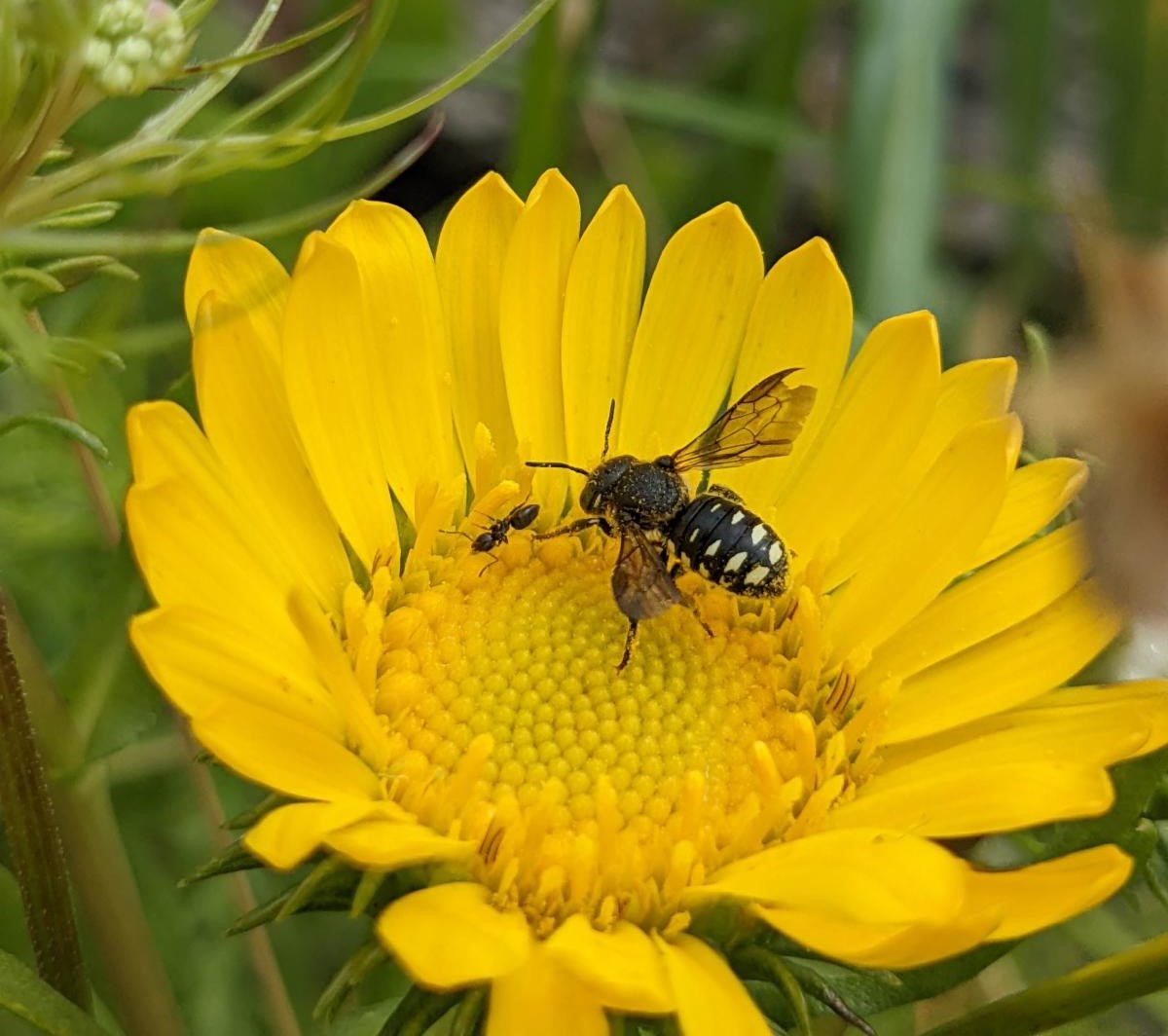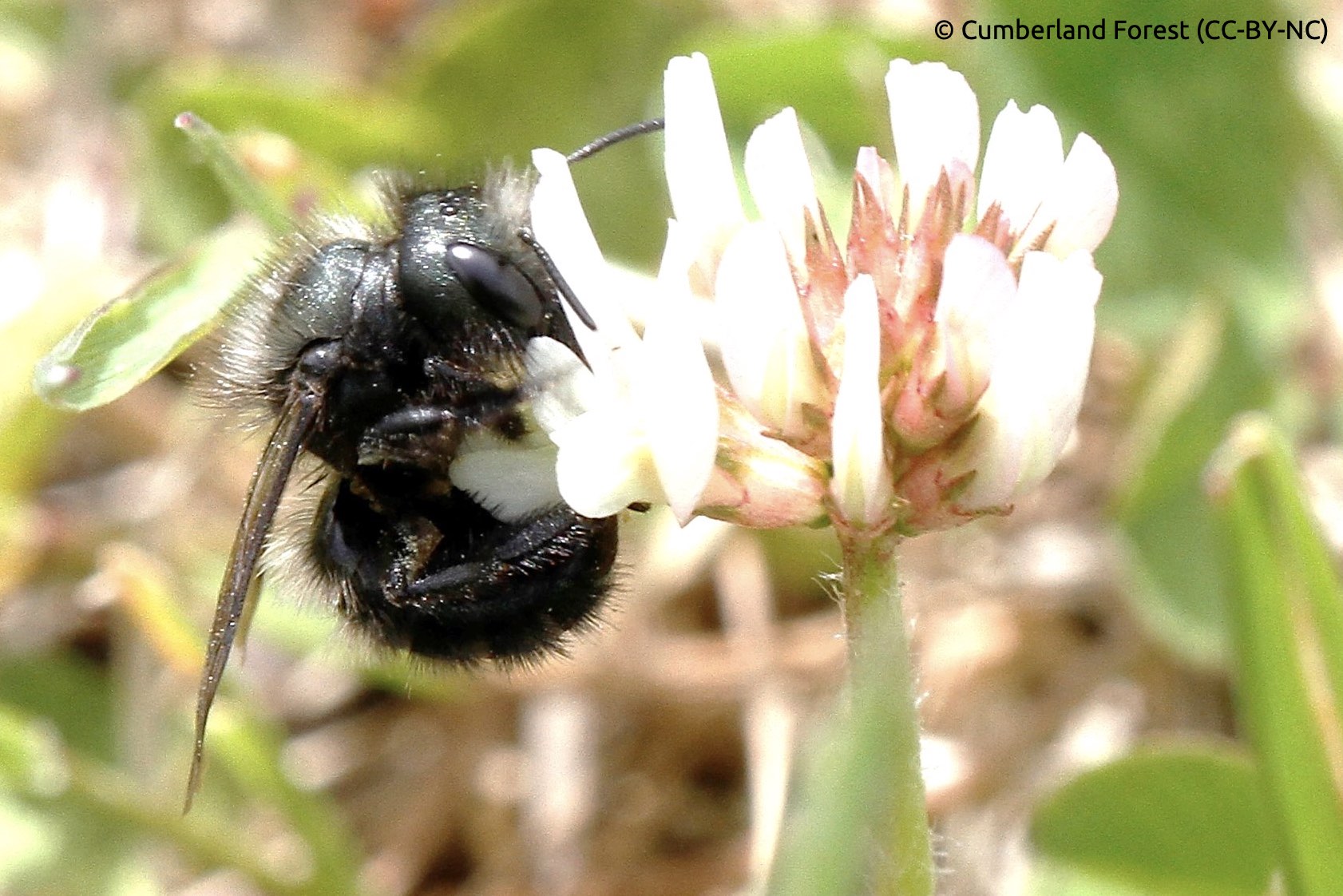News from our 2024 AGM
Kus-kus-sum site in 2023 ~ C. Holbrook
Dyke Road Park Saltmarsh area prior to restoration
Native bee (Dianthidium subparvum) on gumweed ~ M. Ai-Li
Blue Orchard Mason bee (Osmia lignaria)
Bee Resources
Websites
- Native Bee Society of BC – beeID guides, planting recommendations, workshops, and new BC Bee Atlas Community Science project
- iNaturalist – submit bee photos to expand records in the Comox Valley!
- Paleontological Research Institution – Evolution and fossil record of bees
- Common Pollinators of BC by Environmental Youth Alliance and Border Free Bees – basic pollinator ID guide. It complements the insight monitoring app and paper observation form – great for beginner.
- Victory Gardens for Bees – Lori Weidenhammer – guide to stewardship of native bees in gardens
- The Bees in Your Backyard by J. Wilson & O. Messinger-Carrill – a comprehensive and accessible resource on native bee ID
- Common Bees of Western North America by J. Wilson & O. Messinger-Carrill – A new field guide to native bees of Western North America.
- Native Bees of the Western United States – BeeSip- Native bee cards for western US including many species native to BC
- The Solitary Bees: biology, evolution and conservation by B. Danforth, R. Minckley and J.Neff – a comprehensive review native bee literature for a deeper dive.
Our AGM on June 22 was a great success! We had 36 people attend in-person as well as four people in attendance by Zoom. Caitlin and Caila shared some exciting updates and information about new projects and Marika gave a very interesting keynote about native bees. We also said goodbye to some outgoing directors and hello to three new ones.
Kus-kus-sum Project
Caitlin gave an update on the Kus-kus-sum project announcing that the plan is for the steel wall to be taken down during the winter of 2025/2026, pending completion of all the earthworks, plantings and site stabilization preparations currently underway. The Kus-kus-sum project began in 2017 and is one of the most ambitious habitat restoration projects undertaken on Vancouver Island. The work is transforming a derelict sawmill site into a living saltmarsh and deepwater pool like what existed before the industrial period. This restoration is key to a healthy salmon population, which uses the Courtenay River estuary as a transit point between spawning grounds and the ocean.
Dyke Road Saltmarsh Project
It was also announced that we will be working on revamping the Dyke Road Park in partnership with the Stewardship Centre of BC, Comox Valley Regional District, K’ómoks First Nation (including the K’ómoks Guardian Watchmen), and the Guardians of our Salish Estuaries over the coming year. The work will include removing the shoreline armouring and invasive species, recontouring the site, planting saltmarsh and installing a new boardwalk. Some of these activities have already started, with saltmarsh planting occurring in the fall and next spring.
The Project Watershed Team
We have welcomed five new staff members to the staff team over the past year, and elected three new directors to the board this AGM. The new directors — Ben Kingstone, Clarke Goble and Lynne Kilpatrick — will complement the continuing directors Kathy Haigh, Alisha Drinkwater, Tom Grimmer, James Godwin, Brodie Guy, and Geoff Wickstrom. Since the meeting Tom has taken the position of Chair, Brodie – Vice Chair, Geoff – Secretary and Clark – Treasurer.
It was bittersweet to say goodbye to our outgoing directors Pat Sloan, Brian Storey, and Bill Heath. Our thanks go out to them for their many years of service to Project Watershed.
Learning about Native Bees
In a keynote presentation at the AGM, Marika Ai-Li, Project Watershed Restoration and Monitoring Manager, stressed the importance of the relationship between native bees and native plants saying that “some native bees only pollinate certain native plants – if the bees disappear these plants will disappear and vice versa”. She highlighted ways to identify native bees and closed by saying that the protection of wild spaces and native plants is key to native bee survival.
Information for this post provided by:
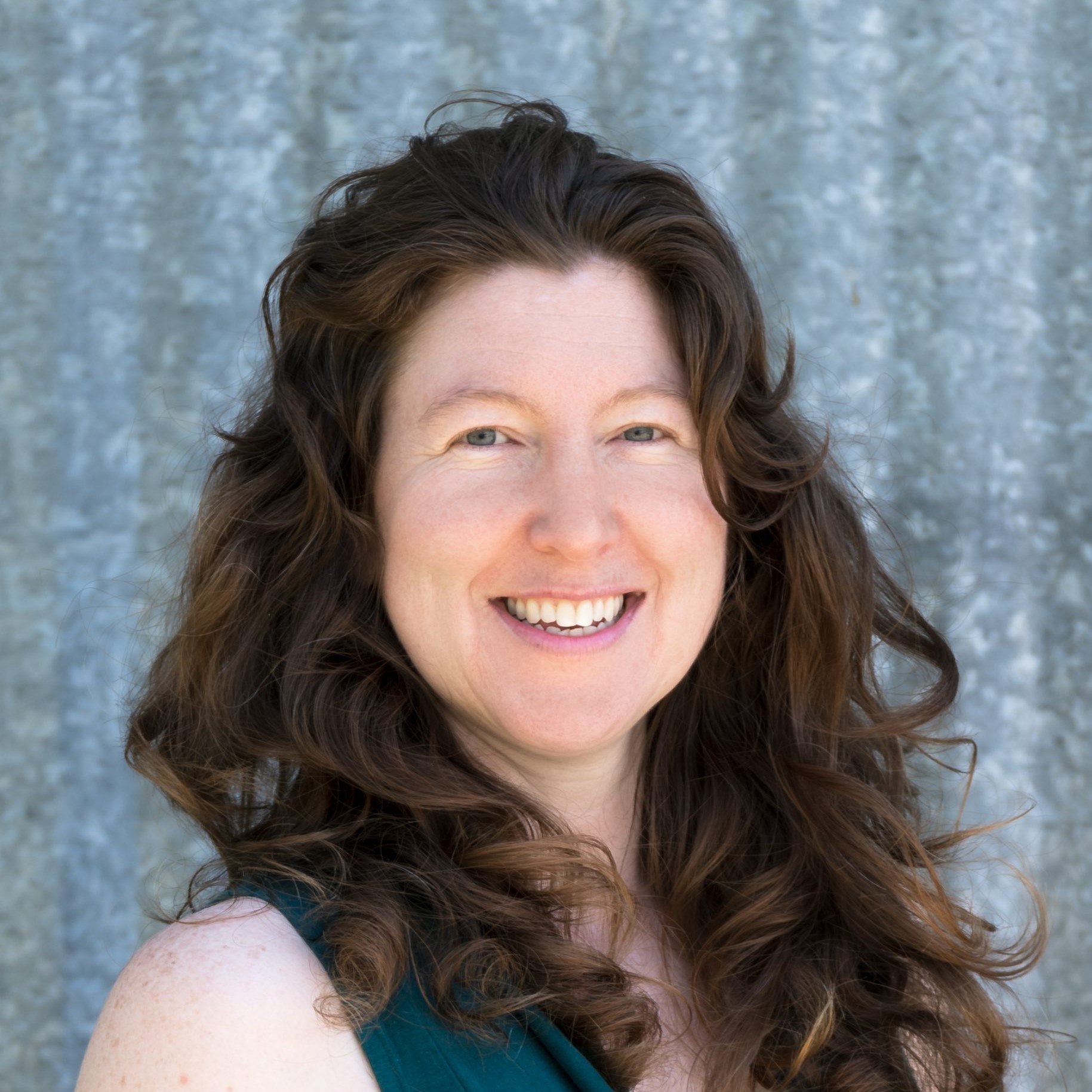
Caila Holbrook
Manager of Fundraising and Outreach
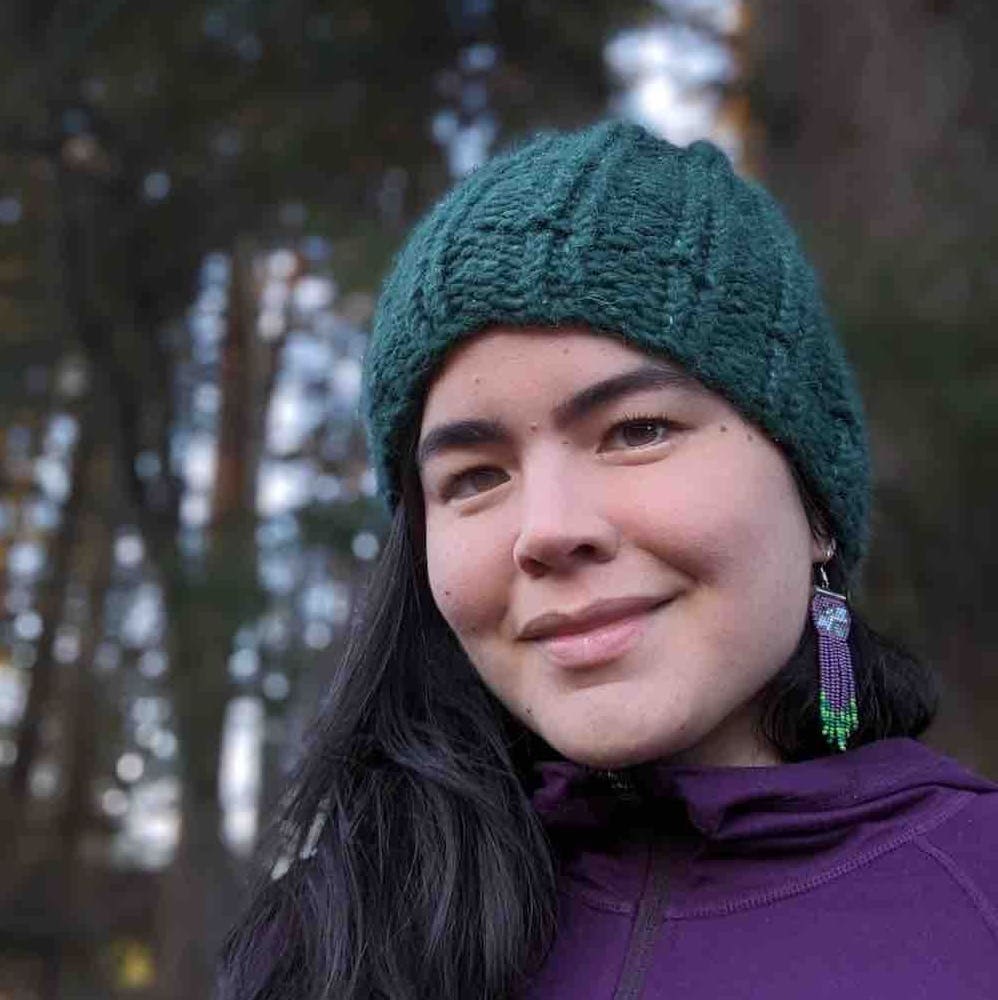
Marika Ai-Li
Restoration & Monitoring Manager
Related Posts
Fall and Winter Forage Fish Sampling
We’re gearing up for the fall/winter season of forage fish sampling!
Mallard Creek Riparian Planting
We will be planting native riparian species along a section of Mallard Creek that we recently cleared of invasive Reed canarygrass.
Fall Planting at Kus-kus-sum
We are looking for volunteers to assist us with planting native trees, shrubs, and marsh plants at Kus-kus-sum this fall!
A New Day for Forage Fish
Project Watershed and the Coastal Forage Fish Network (CFFN) are celebrating Surf Smet Day on October 25th! This adds another day on which to celebrate and raise awareness about beach spawning forage fish as Pacific sand lance are celebrated on a day in December.
Fall Work at Kus-kus-sum
We are looking for volunteers to assist us with weeding out invasive plants to make room for the native plants arriving later this fall!
Forage Fish Survey Techniques Workshop
The Coastal Forage Fish Network (CFFN) is hosting two one-day workshops to introduce development considerations and methods to survey for beach spawning forage fish for projects that may impact beach spawning forage fish.

